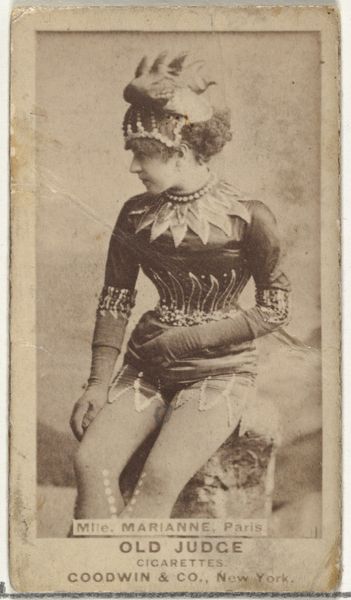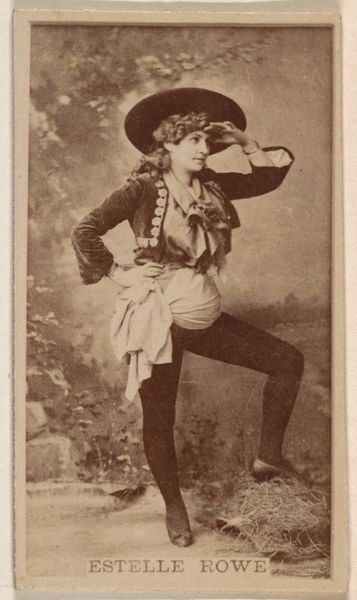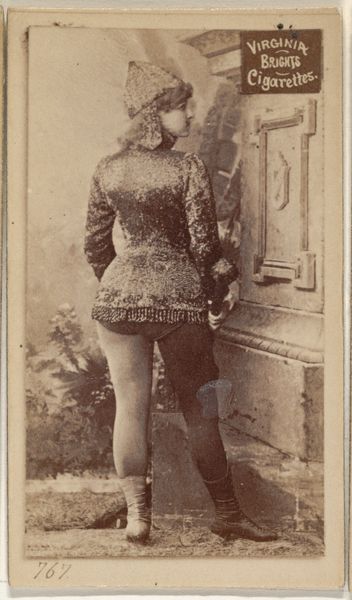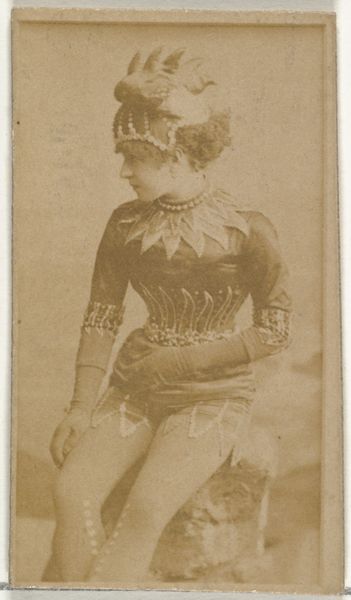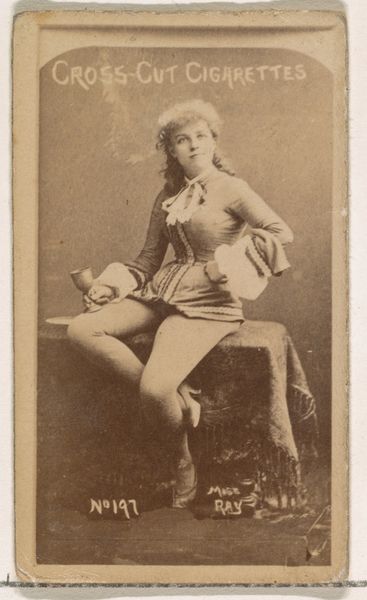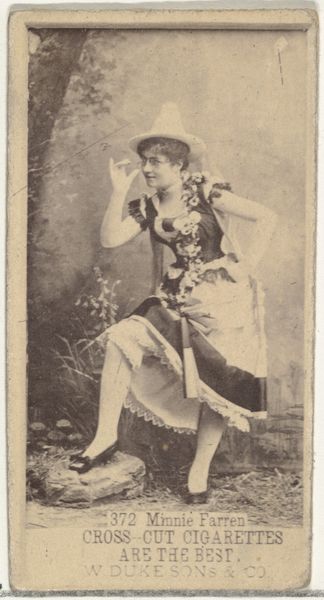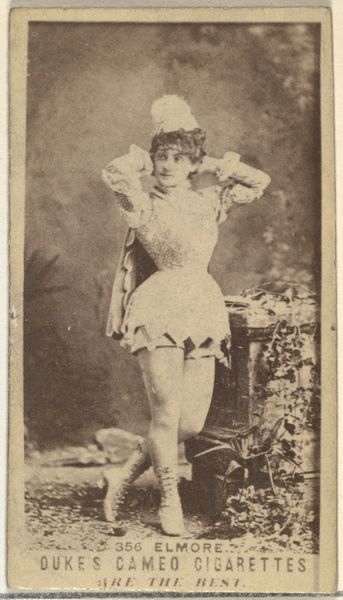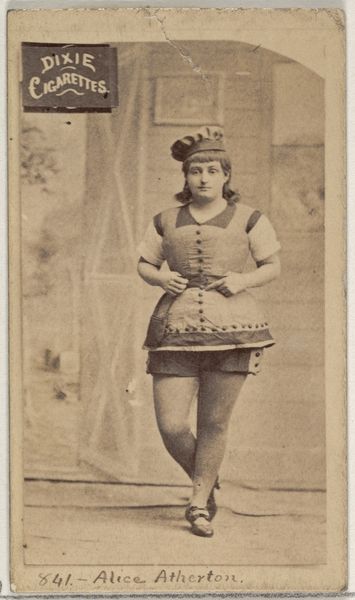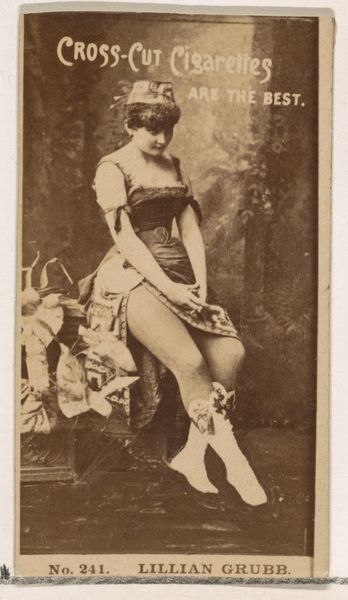
Card Number 51, Annie Sutherland, from the Actors and Actresses series (N145-4) issued by Duke Sons & Co. to promote Cameo Cigarettes 1880s
0:00
0:00
drawing, print, photography
#
portrait
#
drawing
# print
#
photography
#
19th century
#
men
#
genre-painting
#
nude
Dimensions: Sheet: 2 11/16 × 1 3/8 in. (6.8 × 3.5 cm)
Copyright: Public Domain
Editor: This is "Card Number 51, Annie Sutherland," part of the Actors and Actresses series from the 1880s, created by Duke Sons & Co. as promo material for Cameo Cigarettes. It looks like a print based on a photograph. What can you tell me about this piece? Curator: From a materialist perspective, it's fascinating how this image functions as both art and advertisement. The image's value isn't solely aesthetic, but is deeply connected to the economic context of its creation: the rise of mass media, consumer culture, and the burgeoning tobacco industry. The card's materiality—its paper, ink, and printing process—reflect the means of production and distribution available at the time. Think of the labor involved in creating these cards on a massive scale. What does it say about the blurred boundaries between artistic representation, labor and commerce in the 19th Century? Editor: That's a really interesting way to look at it. I guess I was focused on Annie Sutherland herself, but you're right. This card also highlights the means of promoting goods using celebrity images. Was there really such a large market that necessitated the creation of promotional material such as these cards? Curator: Absolutely! Cigarette cards became massively popular, serving as collectibles and driving sales. They tell us so much about the material culture and consumer habits of the late 19th century. It moves the focus from solely *what* is shown to *why* and *how* it was circulated so broadly, transforming it into something greater than simply a promotional card. Editor: I see what you mean. It's not just a picture; it's a product of a very specific industrial moment. Thinking about art as labor helps contextualize so much that is often overlooked. Curator: Precisely. Analyzing its means of production opens new layers of understanding!
Comments
No comments
Be the first to comment and join the conversation on the ultimate creative platform.

